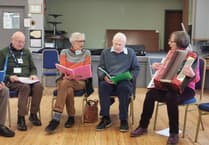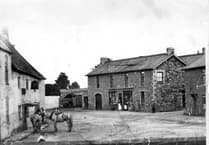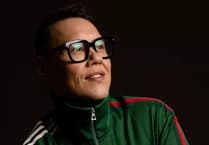Downside Abbey, the minor basilica of St Gregory the Great, is a Benedictine Monastery in England, the senior house of the English Benedictine Congregation.
The Abbey, a ‘hidden gem’ situated in Stratton-on-the Fosse, is one of only four minor basilicas in England and has been designated by English Heritage as a Grade l listed building.
Although connected to Downside School for hundreds of years, the Abbey and the School are now two legal entities working as separate trusts.
Tamsyn Richardson-Aitken, Manager of the Abbey Visitor Centre, told The Journal: “The monks have given over two-hundred years of their lives to be within and serve this community, reciting the same prayers and wearing the same dress as they always have. It was only a hundred years ago that they would have employed much of the village, as it used to be a heavy mining community.
“We want people from the local communities to feel they are proud of this and have ownership of it. I want the public to associate the Abbey with pride, and see that we are showcasing it for the amazing mass of architecture that it is. We want to serve the community and offer a friendly welcome to everyone.
“The monks run the Visitor Centre as a pastoral care system, offering tea and coffee whilst allowing people to feel that they have a place of refuge here.
“We are here to listen to people, no matter what, and one of our outreach aims is to help to battle loneliness.
“We want this to act as a community outreach centre and use it as a place to help others.”
The Visitor Centre, along- side the Abbey, opened ten years ago, and is open every weekday from 9.30 a.m. until 4 p.m. and 9.30 a.m. until noon on a Saturday.
Steven Parsons, Outreach Officer at Downside said: “We have a room upstairs, with audio-visual technology, that any group or business is welcome to hire out.
“Fr Leo is very keen to get people involved in the monastery gardens, looking after the space, and the community is also very conscious of the environment and helping to preserve it.
“All of the monks have their own interests, which they can continue to carry out
here with room for growth. Downside wants the Abbey to appeal to as many people as possible, and connect to everybody, no matter if they are religious or not, and we want it to act as a safe place and bring back its sense of community.”
Tamsyn spoke about bringing people into the community: “Unlike some other religious buildings, we do not believe in charging people to come and see what we are able to see every day, for free. We would much rather encourage people to come and enjoy the peaceful atmosphere, giving them somewhere to prioritise their mindfulness.
“We run tours of the Church and the library and have long hosted a series of talks to educate people on the history of the Abbey, where we tend to get twenty to fifty people coming.
“We aim to cover a variety of topics based on the history of the Abbey, religion, history of the village and art. We also have exhibitions within the Abbey itself, as we feel it is such a beautiful space that should be shared with the public.”
Downside’s internationally-renowned library sets them apart from other monasteries, with an impressive collection of over half a million volumes, many of which are rare books, with twenty eight volunteers to help manage them all.
Steven commented: “The Monastery library is open by appointment for people to come and use the books as research, or reading material. We have some local history archive material, and a reading room for people to come and sit, as well as ancient manuscripts and signed, first editions, from literary geniuses, such as Charles Dickens, which date back to when the monk’s first started collecting.”
An upcoming event at the Abbey will commemorate Dom Gervase Hobson-Matthews, a monk killed whilst serving as an Army Chaplain on the beaches of Dunkirk. The talk will mark the 80th anniversary of the Dunkirk evacuations and explore the monk’s personal experience within the war through extracts from his well-kept diary.
Steven added: “It is important for us that people know we are open, and know they can come and use the spaces whenever they like.
“We are especially appealing to the older generations in and around the local villages who may not be able to use public transport easily to get out of the area. We want to make Downside the central hub of the village, and allow people to take time out of their day to wander around the church for quiet time or to talk to anyone in the Abbey.”
There are a lot of plans for the future of the site, including talks, Open Days and tours of the Abbey and gardens, with opportunities for the public to look around and learn more about the beautiful architecture right on their doorstep.
The next event at Downside is on Tuesday, 3rd March at 10 a.m., a talk by Wessex Archaeology on the works being carried out at Bath Abbey. There is also an Open Day on Saturday, 14th March from 11 a.m. to 3 p.m. includ- ing an Art Exhibition and tour of the Abbey and grounds.




